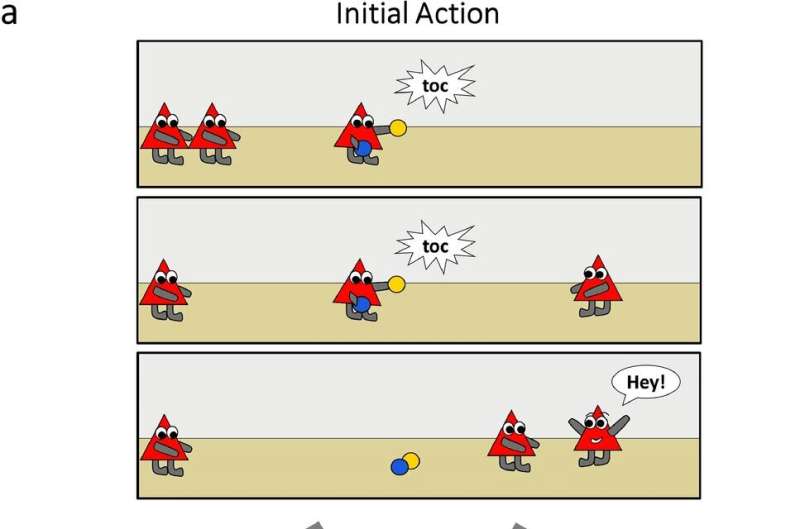This article has been reviewed according to Science X's editorial process and policies. Editors have highlighted the following attributes while ensuring the content's credibility:
fact-checked
peer-reviewed publication
proofread
Study shows infants' understanding of social norms

Our everyday lives are full of rules, such as how we should dress, how we greet each other, which side of the road we drive on, and when we cross at traffic lights. These and many other social norms are the basis for human coexistence in societies. In a recent study by scientists from the University of Regensburg and Oxford University, which is now published in Scientific Reports, it was shown that even babies understand what is right and wrong.
"We were able to show, for the first time, that babies already know that one should behave in the same way as other members of a group. This was also the case when a completely new action was shown, which the infants were able to observe only twice," says Prof. Dr. Moritz Köster, first author of the study, these findings. "We were surprised ourselves, how quickly young infants grasp new social rules, and this is significantly earlier than it has previously been assumed."
In order to investigate the understanding of social norms in infancy, the scientists created short animated picture stories in which two tiny characters performed a new action (e.g., putting two balls against each other). A third character in the scene either performed the same action or did something completely different (e.g., throwing the balls up in the air).
When the third character wanted to join the other two characters, they either reacted welcomingly and accepted the third character or they reacted with rejection and turned away from the third character. The scientists measured the pupil diameter of the infants, to investigate their surprise reaction.
Infants are surprised when the reaction of the group is inconsistent, namely if a non-conform behavior of the third character is affirmed or if a behavior that conformed to the group nonetheless leads to exclusion from the group.
"A very important feature of social norms is that we not only behave as others do, this is found in many animal species with their naturally occurring behavior, but that we also socially evaluate others according to whether or not they follow the rules set by others," explains Moritz Köster.
"In principle, this can be any behavior, so the rule may fulfill an end in itself, signaling to others that one belongs to a certain group. It is remarkable that babies understand this before they can express rules or perform the shown actions competently themselves. What we found may, therefore, be a very basic human mechanism, a social compass, so to speak, which allows babies to organize and to navigate their social environment from very early in life."
More information: Moritz Köster et al, Preverbal infants' understanding of social norms, Scientific Reports (2024). DOI: 10.1038/s41598-024-53110-3



















